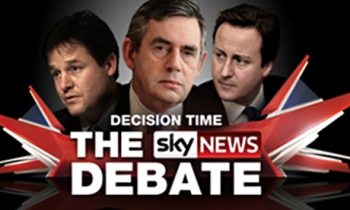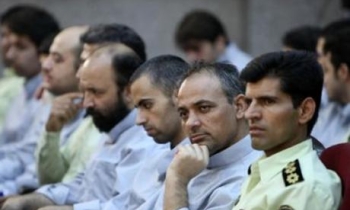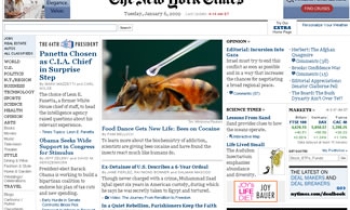The Times of India, by any means, is not the largest circulated daily in the country. Yet, if one sifts through all media criticism in various media, one would see that most of it is de facto criticism of this newspaper alone. Not without reason, though. And we will go into these reasons in good time.
It was not surprising that the newspaper’s brazen declaration that it would be hawking its editorial space for anyone who stakes for it, evoked outrage and widespread condemnation. While most of this denunciation was scattered, there was a concerted bid to stitch together some of the censure in the form of a slim book — The Rape of News — by Mumbai-based Sunil K Poolani.
Though the book was first published last year, the 11 essays contained therein have not lost out yet on its news value or relevance. In times when market-driven journalism rules, readers will forever need to be on their guard — you never know what has been planted by vested interests, primarily of the commercial kinds.
Most journalists in India today would have grown up with the Times. But as Dilip D’Souza goes on to say, “The Times is today a paper that those who knew it even a decade ago would recognise only with difficulty.†He notes that the main centre article is now the only spot in India’s largest newspaper for comment, opinion, and analysis. For, as he writes, “across the board, on every page, hard news is more and more an endangered species.â€
D’Souza argues that since the Times is the largest of the English dailies, it has driven most other newspapers in the same direction of shameless market-driven journalism. “So what we have in the Indian Press is a steadily growing menu of gossip, Internet polls, and fluffy supplements. Actual news gets harder and harder to find.â€
Sevanti Ninan takes the argument forward with all market-driven innovations of the Times. “They may stretch the norm when they first surface. But sooner or later their practices start becoming the norm. What does the rest of the country’s Press do in response to the trends it sets?†Follow the leader, apparently, up the garden path.
The leader sets the trends, and does it by virtually armtwisting all others to follow suit. “It (the Times) will enter a market and peg away at it till it is No 1. It reduces its price and forces others to do the same. It gets the ads while others don’t, and even takes away from them what they have. Its market strategy is three steps ahead of everybody else’s. Its circulation is far ahead of its nearest English language competition, and climbing. In the age of the Internet and television it is driving revenues towards print.â€
Ninan warns: “Today, this hustling market leader is indulging in practices which suggest that the leader cons the reader. When you read a feature in Bombay Times, Delhi Times, or Indiatimes.com you will not be told whether it is just soft journalism or paid journalism.†If you have read this review, you will probably hazard your own guess sice you know that writing news is out, tarting news is in.
Why? Because, as Meena Menon points out, letting the truth prevails comes with a rate card these days. Menon comes down heavily on the practice, and says, “A newspaper has to be a medium that is truly free and impartial and not a conduit for paid news. There is a separate section for that i.e. advertising. As journalists we have often been appalled at the amount of space advertisers get. But that advertisements would ever transgress editorial space was something few imagined.â€
What can be the reason? Are there no guidelines anywhere? Leena Mathias goes through the very noble and awe-inspiring code of ethics formulated by the All-India Newspaper Editors Conference (AINEC) and the norms of conduct laid down by the Press Council of India (PCI). Mathias comes up with an interesting snippet from the latter’s document: “Commercial advertisements are information as much as social, economic, and political information. What is more, advertisements shape attitude and ways of life at least as much as other kinds of information and comment. Journalistic propriety demands that advertisements must be clearly distinguishable from editorial matters carried in the newspaper.†Notice the space that allows for one to be as equivocal as one wants to?
But Farzana Versey does not make nebulous statements or mince words. “Everyone is screwing up their noses at the stink, not realising the garbage is in their own backyard. The Press talks about ethics; it is time it looked within. The casting couch, corruption, blackmailers, toy boys, conscientious chicks — all of them who know how to make the right chirping sounds. If you have a dissenting voice, you will be accused of lashing out at ‘imagined opponents’ by people who are busy sucking up to various lobbies.â€
Yes, lobbies are there for sure. These lobbies act as news filters. Mathias quotes Noam Chomsky and Edward S Herman, and says they showed that the American media prints the “residue†left after the news passes through the five filters: size, ownership, and profit orientation of the mass media, the advertising license to do business, reciprocal relationship with news sources, fear of the flak and the enforcers and anti-communism as a control mechanism. “It is not too far from the Indian reality,†she concludes.
Not a very happy state of affairs for those who look out for truth and objectivity. So what does one do in such a lugubrious situation? Writes Meher Pestonji, “When a newspaper becomes so irresponsible, it’s time for readers to intervene, not let themselves be taken for any more rides. They must switch to more honest newspapers. Only when circulation drops will the dip in advertising revenue force the Times to renew its tryst with reliability.â€
Other contributors to this sixty rupee anthology apart from Poolani himself are S Sowmya, Frederick Noronha, Shivam Vij and Nilanjana S Roy.









